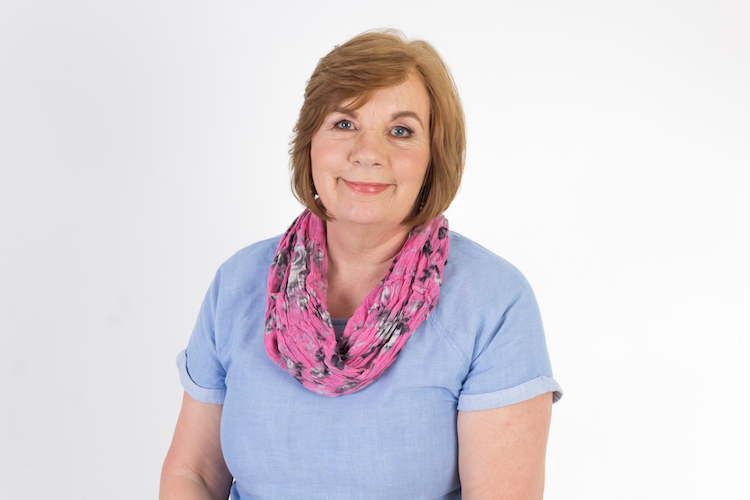
To-Do lists! We all have them! There are paper to-do lists, digital to-do lists, apps to create lists, voice notes to-do lists, post-its with your to-do lists…. The options are endless!
But how do you make a to-do list that actually works? How do you successfully use a to-do list where you can tick off items, and feel the satisfaction of getting things done?
For the ADHD brain, getting things done can be challenging! Getting started with tasks, prioritizing, struggling to be motivated, feeling overwhelmed – all of these are relatively common for individuals with Attention Deficit Hyperactivity Disorder.
The part of the brain looking after these executive functions is in charge of many organizational aspects needed to take action, get things done, and clear items off the to-do list. It is the conductor in an orchestra, supervising all the other actions and behaviors. But this often does not work so well when you have ADHD.
That explains why getting everything done that needs to be done at work, or at home can be challenging and overwhelming. Whether it is doing laundry, organizing your closet, completing reports, or submitting projects – getting organized can be difficult when you have ADHD.
This raises two questions:
- How can you get these things on your to-do list completed?
- What can you do to finally clear the to-do list?
I want to share some tips that have worked for my coaching clients in the past. So, let’s get started!

5 Strategies to Create a To-Do List That Works!
- Understand your brain, and learn to work with it!
How well do you understand how your ADHD brain works? How often are you comparing yourself with other people who don’t have ADHD? Take time to understand how the ADHD brain works.
As I mentioned above, the executive functions in an ADHD brain are often impaired (I really don’t like that word but can’t find another substitute). This affects your focus, attention, and the regulation of emotions as well – such as feeling frustrated, or impatient. This in turn can impede your productivity. The neurotransmitters in an ADHD brain also don’t function as well. For example, less dopamine is produced – this affects your concentration, and causes even more distraction.
Take some time to read, and understand more about your ADHD brain so you can get clear that this is not personal. This is not your fault. There’s no need to blame yourself because you don’t feel as productive as other people. Learn to work with your ADHD brain instead of fighting it!
- Embrace who you are
Individuals with ADHD often struggle with self-esteem, and feel ashamed. Do you feel “less” than the other people around you in some way, and spend a lot of time comparing yourself to others? This can make you feel bad, and you lose motivation. When you lose motivation, then you don’t take action, and things don’t get done—such a vicious cycle.
Take a moment to ask yourself how you feel right now, and explore the feelings you have about the items on your to-do list.
Which item are you most worried about?
Ask yourself: If I could cross one thing off my to-do list, which one would make me feel better right now?
Once you have the answer, then the path is clear, take action and do the one that will make you feel better once it is completed, or will take the worry away!
Another aspect of knowing yourself is asking the following questions:
- What are my habits and preferences?
- What times of the day am I the most productive?
- When do I feel the best energy-wise?
- What is distracting me, and when?
- What do I avoid doing, and why?
- What kind of work do I love doing?
It is a really valuable exercise to track yourself for a couple of days if you are not sure of the answers to these questions.
Please keep it simple, and either send yourself some voice notes on your phone throughout the day to track your levels of activity or inactivity, or carry around a small notepad in your pocket, or your bag, and write everything down. This will give you a better idea of how and when you work best.

- Take time to manage time
If we want to tick things off our to-do lists, it is not enough just to write our list out and then check it every few days to remind ourselves what needs to get done. You have to set aside 5 or 10 mins every day to review your list, and decide what the most important things to do for that day are.
You may want to focus on just three things (More on prioritizing later!).
Set a timer on your phone to remind yourself to sit down and review your list. Make it a time that works for you. Back up the timer by placing post notes on your fridge, or your bathroom mirror.
My adult daughter, who has ADHD uses Amazon Alexa for all her reminders, and it works really well for her, so you might want to try that.
4. Find a time management system that works for you
What tools can you use to help you tick off things on your to-do list? A fancy phrase for this is a time management system. It is really important to find a “system” that works for you.
Here are some options:
- Write your list down on paper or a notepad
- Create a list on your phone
- Use post-it notes, and place them in a strategic place in your home or office
- Use Alexa to give you reminders for everything you have to do
- Add your to-do list to Google calendar, creating time blocks where you will focus on each item, and setting a reminder to help you remember to actually do it
- Use Apps like Asana, Evernote, or Things which are specifically designed to help you remember what you have to do, and help you get things done. I personally love Asana because it is very visual, and when you tick off a task, the color changes!
Ultimately, you have to experiment, and find what works for you. When you do, try to stick to one system for a few months, and see how it goes. The ADHD brain gets bored easily, and some of you may need to switch systems every few months to stay motivated, and avoid boredom!
5. Learn how to Prioritize
One of the main challenges for individuals with ADHD is being able to prioritize. In my practice as an ADHD coach, I have found that clients frequently feel really overwhelmed. They feel overwhelmed about where to start, and everything feels urgent. They may have lots of different lists. They may be laser-focused on something that they really enjoyed doing, but then get really behind with other stuff which may be more important, or urgent.
So, how do you prioritize?
When you review your list every day, make a decision as to what are the three most important things you need to cross of your list for that day. It may be something you are really worried about, something urgent like call the plumber, or even an action that will make you feel really good once it is completed.
Once you have chosen the top three things on your list, be realistic, and make a decision as to what else you can get done today, and what needs to be left for the next day.
This is why it is so important to take that 5 or 10 minutes every day to keep reviewing your list—take the time to manage time!
About the Author

Sally Forsyth is a trained ADHD coach working with adults and young people. She offers support to manage unique challenges faced by individuals with ADHD and offers strategies for success in their personal and professional lives. For more information check out her website at www.coachmyfuture.com




Leave A Comment
You must be logged in to post a comment.